Comet 29P/ Schwassmann-Wachmann 1
This comet is very interesting because it orbit is more like that of an asteroid. The comet orbits between Jupiter and Saturn and for the most part is around magnitude 17. However at irregular intervals, the comet undergoes outbursts which bring it within range of 10" telescopes. At the same time the comet produces a dusty coma that gradually gets larger and more diffuse before fading away and the comet returns to its pre-outburst state. I have observed a number of these outbursts visually, however while on a visit to the Chiro observatory during January 1998 I was able to image the comet during one of these outbursts. On this occassion I was observing comets with a 17.5" telescope and just checked the position of Schwassmann-Wachmann 1 out of interest, not expecting to see anything. When the comet was easily visible, I immediately turned a 12" telescope onto the comet to photograph it.
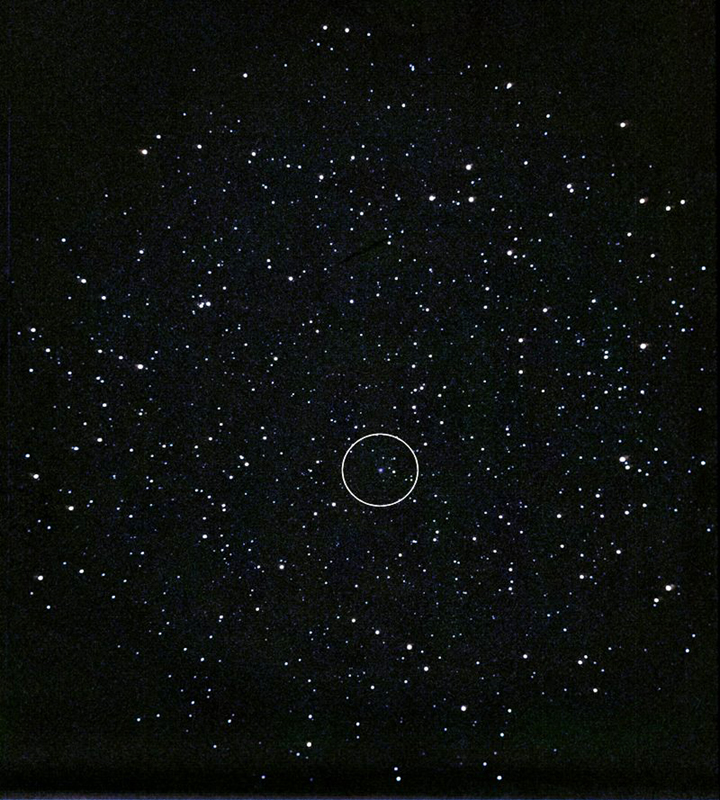
Comet 29P/ Schwassmann-Wachmann 1. January 28, 1998.
35 minutes exposure Kodak Ektachrome 100 film.
300mm F/6 newtonian at prime focus.
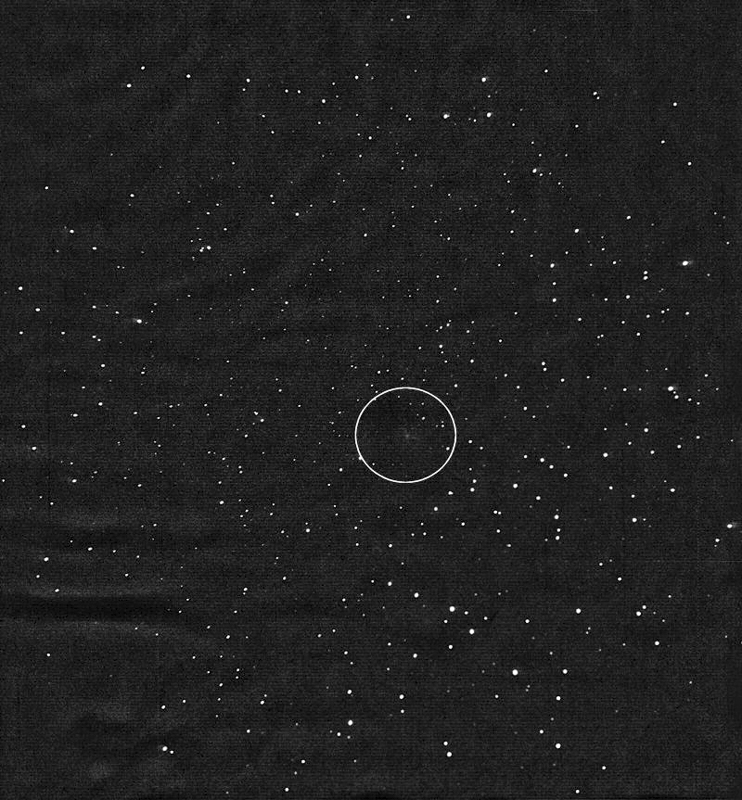
Comet 29P/ Schwassmann-Wachmann 1. February 2, 1998.
43 minutes exposure Kodak Ektachrome 100 film.
300mm F/6 newtonian at prime focus.
Comparing the two photographs, it is possible to see how as the outburst progressed, the coma became larger and more diffuse, and the central condensation became fainter.
June 2001 was the first time I imaged an outburst using a CCD.
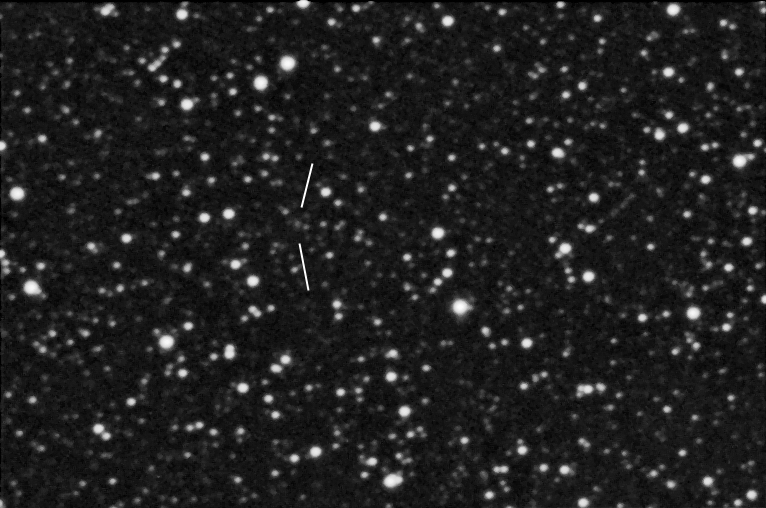
Comet 29P/ Schwassmann-Wachmann 1. August 29, 2000.
Combination of 2, 3 minute images taken 1 hour apart. Meade 416XTE, 300mm F/6 newtonian at prime focus.
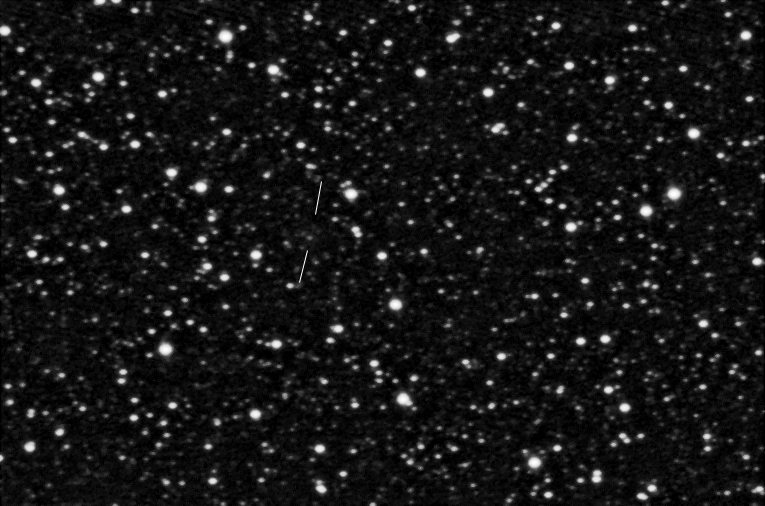
Comet 29P/ Schwassmann-Wachmann 1. August 29, 2000.
Combination of 2, 3 minute images taken 1 hour apart. Meade 416XTE, 300mm F/6 newtonian at prime focus.
These images show the comet in its usual quiet state. compare this with the images of one outburst shown below.
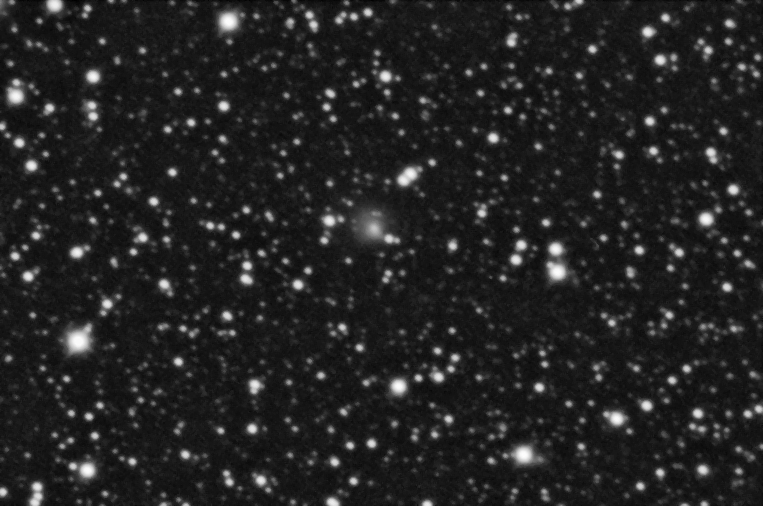
Comet 29P/ Schwassmann-Wachmann 1. June 16, 2001.
Combination of 2, 3 minute images, Meade 416XTE. 300mm F/6 newtonian at prime focus.
On this night the comet was around magnitude 12.8 and as can be seen in the image, displays a strong central condensation, surounded by a diffuse outer coma. This is early in the outburst, so this outer coma is fairly uniform and small.
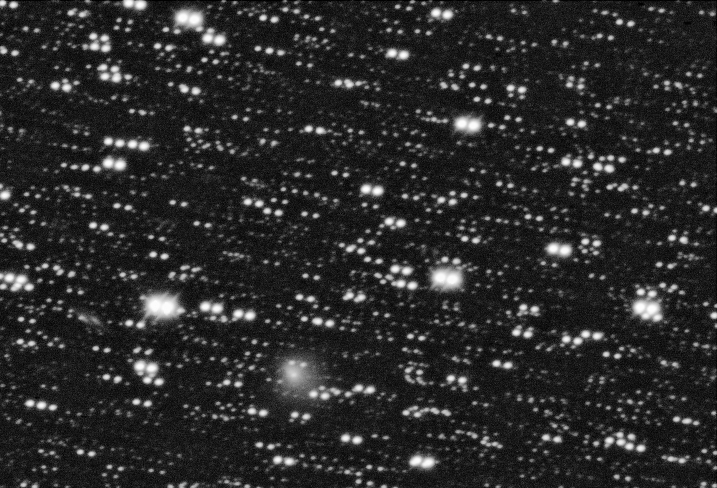
Comet 29P/ Schwassmann-Wachmann 1. June 18, 2001.
Combination of 2 pairs of 3 minute images, Meade 416XTE. 300mm F/6 newtonian at prime focus.
As the outburst has progressed, the outer coma has become larger and more diffuse. Also note that it is no longer spherical, but elongated towards the bottom right. (south-west) Not far to the left of the comet is an edge-on galaxy. It is shown better in the image below where the images have been aligned on the stars rather than the comet. The only designation I have found for this galaxy is from the GSC where it is listed as a nonstar, GSC 6886:301.
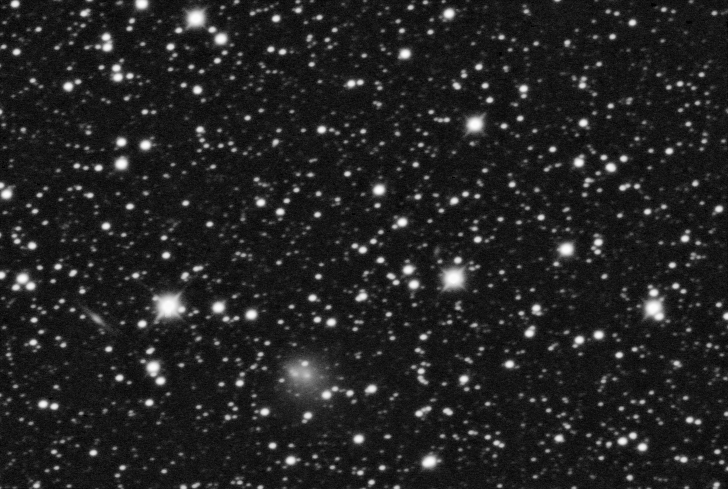
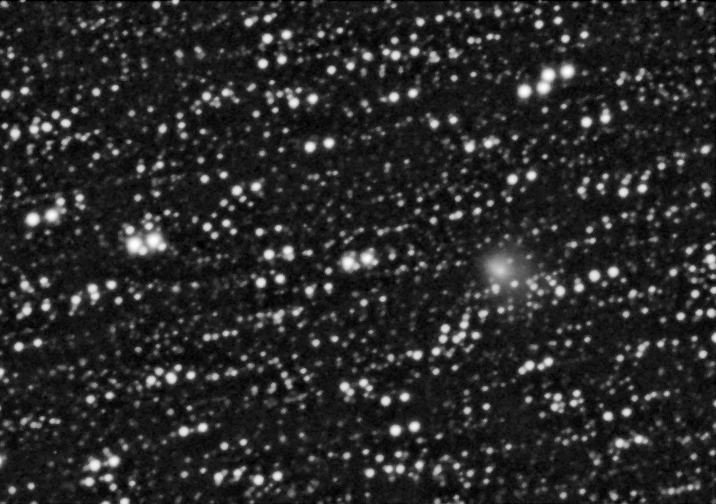
Comet 29P/ Schwassmann-Wachmann 1. June 20, 2001.
Combination of 2, 3 minute images, Meade 416XTE. 300mm F/6 newtonian at prime focus.
By now the coma has become fainter and more dispersed, with a clear extension towards the lower right. (south-west) This is primarily dust from the coma forming a broad tail as it is driven away by radiation pressure from the Sun.
Another outburst, this time in 2004.
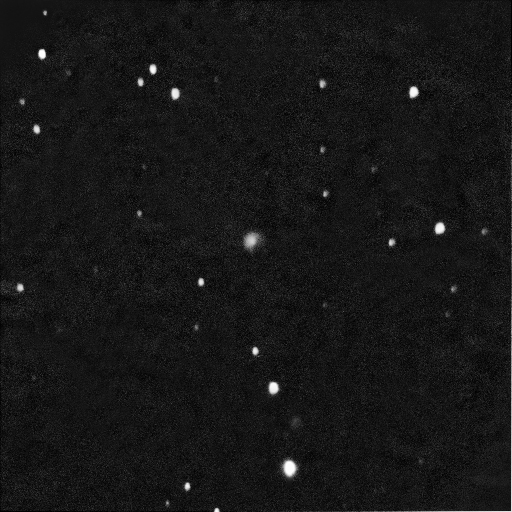
Comet 29P/ Schwassmann-Wachmann 1. December 19, 2004.
3 minutes exposure SBIG ST9E CCD.
16" F/10 schmidt-cassegrain with an f/6.3 focal reducer.
An outburst in January 2005. A very faint coma can been seen mostly to the left (east) of the comet.
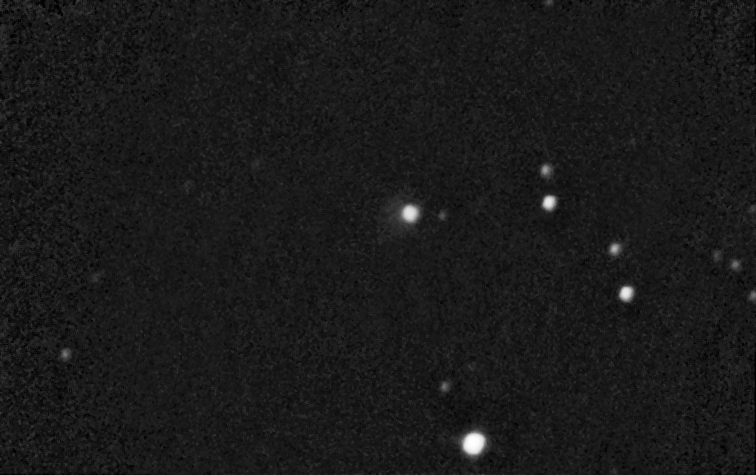
Comet 29P/ Schwassmann-Wachmann 1. January 7, 2005.
Combination of 5, 2 minute images, SBIG ST-8XE CCD.
18" f/10.5 Ritchey-Chrétien cassegrain at prime focus.









